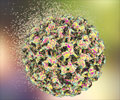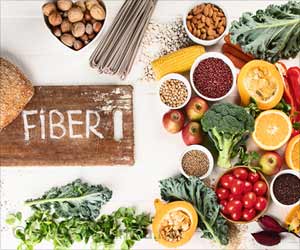How to prevent cervical cancer? Uncover key strategies: vaccination, early detection, and collaborative efforts for a healthier future.
- India's move to include the cervical cancer vaccine in the universal immunization program for girls aged nine to 14 is a positive step
- Cervical cancer is a significant health concern for Indian women, ranking as the second-most common cancer
- Cervical cancer can be prevented through HPV vaccination, effective screening, and early diagnosis
Secular trends in incidence and mortality of cervical cancer in India and its states, 1990-2019: data from the Global Burden of Disease 2019 Study
Go to source). However, recent developments, including the government's plan to include the cervical cancer vaccine in the universal immunization program, bring a ray of hope.
What is Cervical Cancer?
Cervical cancer primarily targets middle-aged women, and its prevalence is influenced by factors like persistent high-risk HPV infection, low socioeconomic conditions, compromised immunity, and smoking. Despite its severity, cervical cancer is preventable and highly curable when detected early (2✔ ✔Trusted SourceCervical Cancer
Go to source). A crucial aspect is the extended pre-invasive phase, lasting 10–15 years, providing a unique opportunity for early detection and intervention.
Cervical Cancer Vaccine
The imminent inclusion of the cervical cancer vaccine in the universal immunization program is a monumental step. HPV vaccination for girls in the nine to 14 age group is projected to commence this year. Early vaccination not only prevents the initiation and progression of cervical cancer but also contributes to a reduction in mortality rates.Did You Know?
Cervical cancer, the second most common cancer in Indian women, can be prevented and cured if detected early. Stay informed, get vaccinated, and encourage others to do the same!
Challenges in Detection and Treatment of Cervical Cancer
Despite the promising developments, challenges persist in the detection and treatment of cervical cancer. A significant gap lies in awareness, evidenced by a population-based study showing that 68% of patients initially sought help from traditional healers. Additionally, only 3% had received the HPV vaccine. The projected increase in cancer cases and the leakage from screening to treatment steps highlight the urgency for comprehensive solutions.WHO's Three-Pronged Approach to Eliminate Cervical Cancer
The World Health Organization (WHO) advocates a clear strategy to eliminate cervical cancer globally. Widespread HPV vaccination, efficient screening, and early diagnosis and treatment constitute the three pillars. The proposed targets, including 90% of girls fully vaccinated, 70% of women screened at crucial ages, and 90% of women with cervical pre-cancer receiving treatment, underscore the urgency and ambition of the global campaign.To truly eliminate cervical cancer, a multifaceted approach is imperative. Strengthening population-level awareness, overcoming vaccine hesitancy, promoting age-appropriate screening, and enhancing pre-cancer treatment processes are vital. Additionally, partnerships at various levels, digital interventions, and efficient communication can bridge gaps in care pathways and contribute to a cohesive strategy.
As India strides toward eliminating cervical cancer, consistency in screening programs, technological advancements, and financial support for cancer care are essential. Strengthening cancer registries, reducing the financial burden on patients, and early integration of palliative care services form key components of this journey. Collaborations with NGOs, innovators, and public health professionals can amplify the impact of these initiatives.
Connecting all aspects of patient care pathways, ensuring swift and accurate diagnosis, and leveraging digital technologies are paramount. Follow-up reminders, palliative care integration, and collaborative research efforts further fortify the fight against cervical cancer. It's through collective efforts and unwavering partnerships that India can envision and realize a future free from the burden of cervical cancer.
References:
- Secular trends in incidence and mortality of cervical cancer in India and its states, 1990-2019: data from the Global Burden of Disease 2019 Study - (https://pubmed.ncbi.nlm.nih.gov/35130853/)
- Cervical Cancer - (https://pubmed.ncbi.nlm.nih.gov/28613745/)
Source-Medindia
















